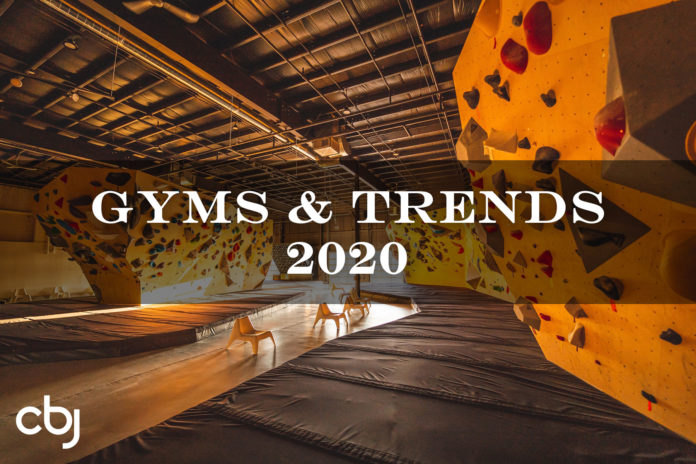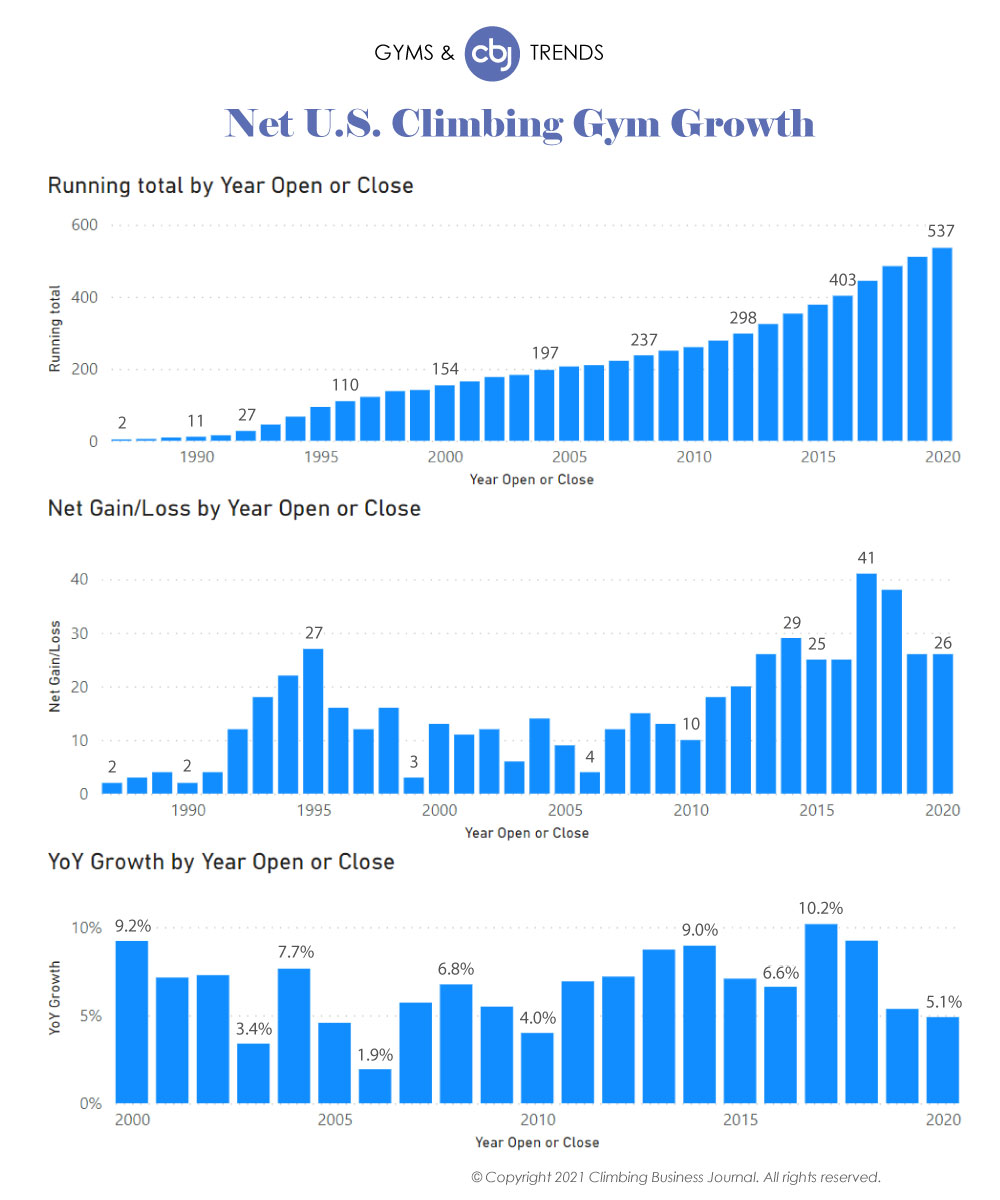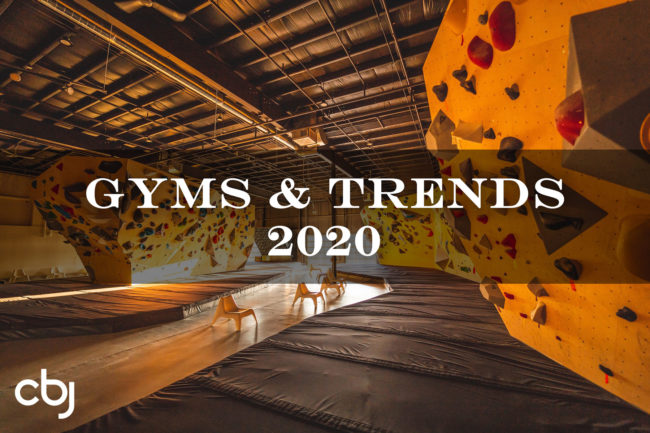
At the end of last year’s Gyms and Trends report, when talking about the handful of North American climbing gyms that had closed permanently in 2019, we—at CBJ—noted that the reasons for closures were largely property-related issues, including rising rent prices and lease disagreements. In other words, some gyms had fallen victim to unfortunate but rather standard and predictable factors when it came to operations.
CBJ published that Gyms and Trends article in February, 2020. Approximately one month later, operations in the climbing industry in North America—and throughout the world— began to change drastically. A new factor emerged that became widespread and impactful at a scale never seen before in the modern gym climbing era. Indeed, the COVID-19 pandemic hit with full force, and its major effects are still challenging the climbing industry nearly one year later.
That first wave of the COVID-19 pandemic stateside in March 2020 proved to be as destructive as it was unpredictable. Gym attendance everywhere plummeted as people became increasingly cognizant (and in some cases increasingly fearful) of the Coronavirus’ transmissibility. Related to the gym industry, the Tokyo Olympics—where climbing was set to make its highly-publicized debut—were postponed. The annual Climbing Wall Association (CWA) Summit was cancelled and CWA, as the industry’s trade association, shifted to providing ongoing pandemic-related resources and support, including a roadmap for reopening.
To that point, the pandemic unified the industry, in a way, as gyms showed transparency in exchanging information on CWA community calls and surveys, sharing protocols and data, offering lessons learned and further problem solving together. In the United States, practically every climbing gym in every state was deemed a “non-essential business” and forced to temporarily close at some point in the spring or summer of 2020 as the Coronavirus continued to spread around the country. Gyms eventually reopened with significant mitigation measures (such as reservation time-slots, required face-masks, lowered capacities, and enforced social distancing…all of which contributed to a “new normal” for the climbing gym experience).
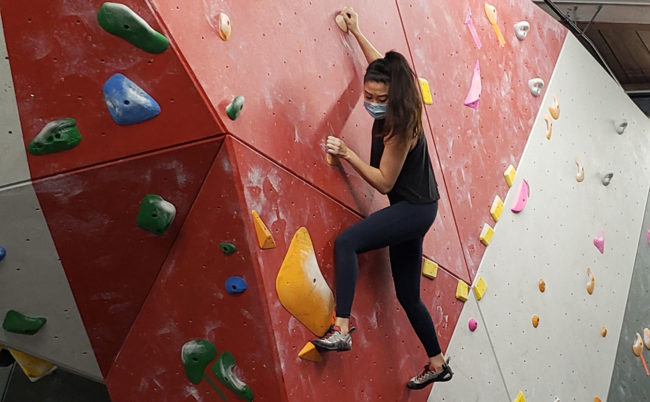
Such collectivism by gyms was hardly a long-term silver lining, however; many gyms were forced to temporarily close again in the fall of 2020 as another wave of the COVID-19 pandemic surged; some of those gyms even chose to remain open, going against mandatory municipal orders and risking serious legal penalties—all in an attempt to stay financially afloat.
The temporary closure of so many gyms amid stay-at-home orders did result in a boom for the homewall tier of the climbing industry. As early as April, CBJ announced that the “Era of Home Climbing Walls” had arrived. Indeed, 67 percent of homewall owners responding to an October survey answered that they built their homewall in response to the pandemic. And since it is unlikely that many new homewallers will choose to quickly disassemble their walls in a post-pandemic world, this widespread interest in homewalls―as well as the uptick in at-home fitness offerings provided by gyms―will likely remain a key part of the industry going forward.
All that being said, when considering the industry trends from the past year, there are a few major questions that emerge: First, just how bad was the pandemic for climbing gyms, on the whole? Moreover, how long will the effects of the pandemic continue to challenge the industry? Should climbing professionals be worried? And, more specifically, how might the pandemic alter gym plans and projects originally slated for 2021? A closer look at the data, below, will best address those important questions.
(Be sure to check out CBJ’s 2020 Gym List Awards in tandem with this report. The awards include Top Developer of the Year, as well as the Largest and Tallest Gyms of the Year. The report also lists every new gym to open in the United States and Canada in 2020.)
44: new climbing gym openings in the U.S. in 2020
It might be somewhat surprising to hear that there were actually more new gyms that opened in the United States in 2020—the “pandemic year”—than in 2019. Specifically, 44 new gyms opened in the U.S. in 2020. That is far less than the more than 60 gyms that were initially expected to open throughout the year—and significantly less than the 50 plus new gyms that opened in 2017 and 2018.
Still, 44 new gyms in 2020 should be considered a steady—possibly even robust—continuation of the annual upward trend in gym construction that has been blossoming especially since the start of the 2010s. However, the data that majorly offset that number of new gym openings was the great number of gyms (18, to be exact) that permanently closed in 2020―the most ever in the United States in a calendar year.
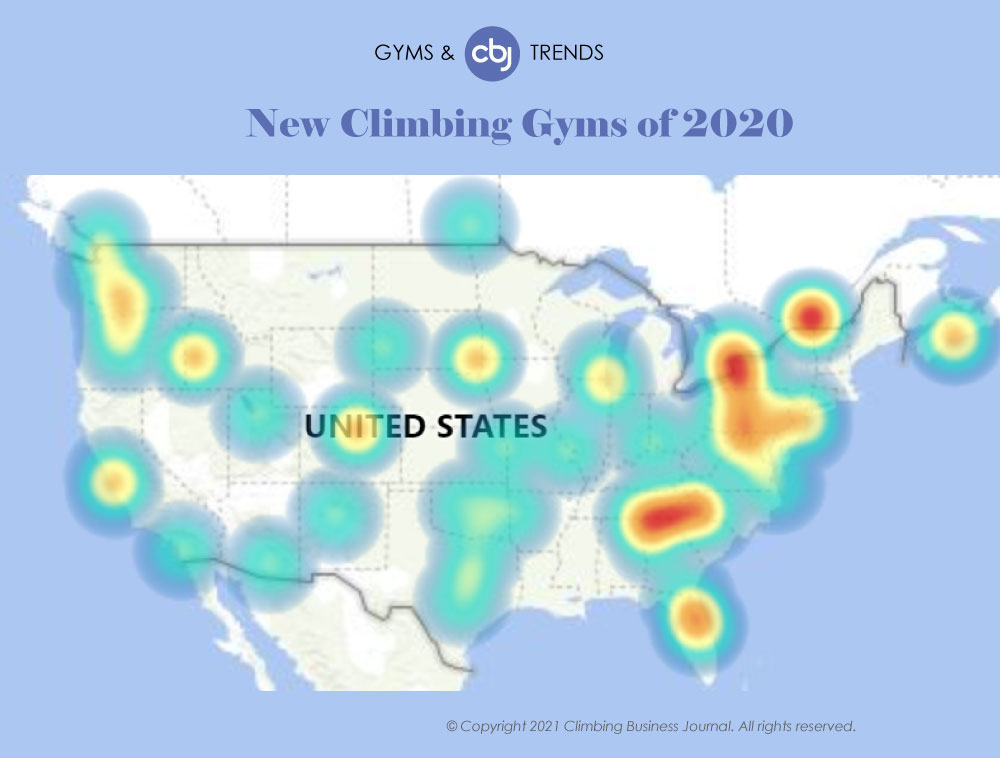
Most of the gyms that permanently closed in 2020 ceased operations due to the economic wallop of the pandemic. The adjusted growth rate for the industry—calculating both openings and closures—was 5.1 percent. That is the lowest growth rate since 2010, and it is a stark contrast to initial predictions of 2020 being a veritable boom year for climbing gyms. Even at CBJ, prior to the onset of the pandemic, we wrongly anticipated “the climbing gym industry in North America to have its best year ever in 2020.”
“The pandemic has devastated new gym development projects,” stated Mark Melvin, founder and owner of Touchstone Climbing, the largest gym chain in California. “Because gyms take so long to develop, I would bet that those opening or worked on were in the works already.”
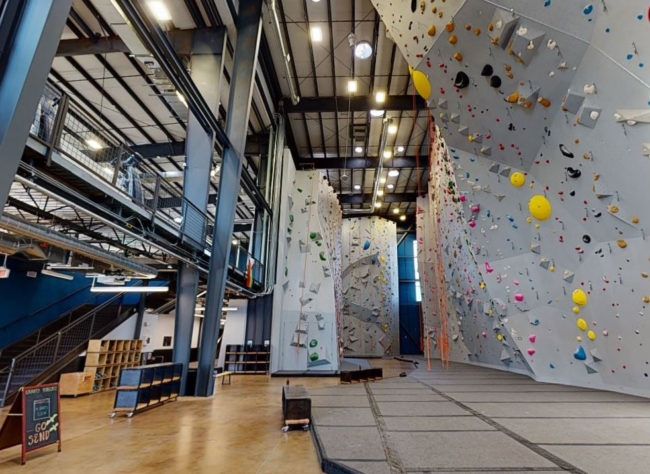
Indeed, the growth rate of commercial gyms in the U.S. was low in 2020, but there is hope for a rebound. At the present time, there are 61 new gyms that are slated to open in the U.S. in 2021 or later, which points to continued robust growth. The duration of the pandemic is, of course, a big unknown. And, it should be underscored that 24 percent of gyms responding to the question in the CWA’s December survey indicated they are in danger of going out of business within the next 12 months. But the plethora of planned facilities indicates an enduring optimism among developers at the outset of 2021.
“2020 was a difficult year and presented everyone with more unforeseen challenges than ever before at an unprecedented level of complexity. However, what didn’t change is the passion members have for climbing and our community,” said Robert Cohen, CEO of the El Cap family of gyms (Earth Treks, Planet Granite and Movement Climbing + Fitness). “I believe that as vaccines become more available and the overall climate becomes safer for people, more will return to the gym to see and climb with their friends again.”
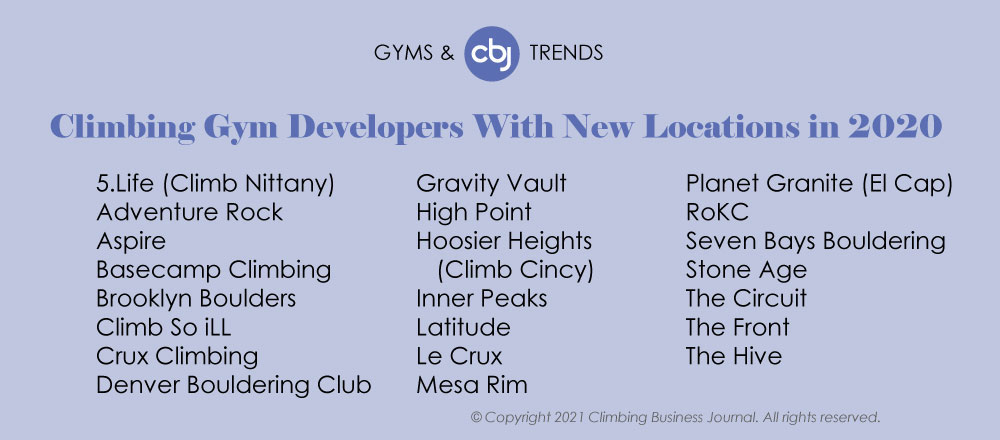
39: percentage of new U.S. climbing gyms in 2020 that were expansion gyms
In 2020, only one gym developer opened multiple new facilities, and it was not a United States entity (The Hive in Canada opened two new gyms). That is quite different from 2019, when the big story was multiple-facility expansion by large-scale developers and parent companies. For instance, El Cap acquired the Movement gym chain in 2019 to bring its total number of facilities to 16; elsewhere, Central Rock added five gyms, the most of any developer that year. In total, 53 percent of new gym openings in the U.S. in 2019 were expansion gyms part of gym chains. In 2020, that figure dropped to 39 percent.
However, of note is that only three of the 18 gyms that permanently closed in the U.S. in 2020 were part of multiple-facility chains. Thus far into the pandemic, it has largely been single-facility climbing entities in America that are closing their doors at a higher frequency.
“I would think that being a multi-gym chain is a double-edged sword,” explains Casey Newman, Sales Manager of Eldorado Climbing. “It could make staying afloat easier because you can pool and spread resources and keep a wider net for revenue, but also be a drag because you have the higher base overhead of more than one facility, with reduced income for the time being.”
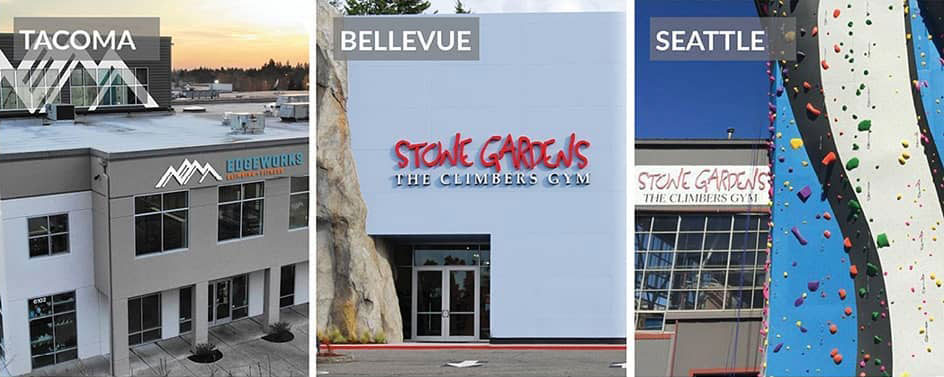
In addition to the opening of new gyms and permanent closures of existing facilities, last year saw at least one noteworthy acquisition of existing gyms as well—albeit not as large as El Cap’s ventures from 2019. In the fall of 2020, Edgeworks Climbing + Fitness acquired the two Stone Gardens locations in Washington after longtime Stone Gardens owner Keith Magnuson decided to sell his gym properties.
“At the start of the COVID pandemic, we had an intent of coming out of the pandemic stronger than we entered. We have always looked to reinvest our efforts, growing and creating opportunities for our community and staff… The opportunity to acquire Stone Gardens definitely fits this category of growth…” said Tod Bloxham, owner of Edgeworks. Bloxham was also among the key staff to depart from the popular climbing gym CRM software company Rock Gym Pro (RGP) last summer. The departures—unrelated to the pandemic—of founder Andy Laakmann, Ted Knudsen (Chief Technical Officer) and Bloxham (CEO) were part of an ongoing transition since RGP was sold to Togetherwork in 2018.
Acquisitions were not limited to climbing gyms in 2020 either. For example, in climbing media, the publisher of Climbing magazine—Pocket Outdoor Media—acquired Big Stone Publishing, and with it the popular titles of Rock & Ice and Gym Climber. And in the first week of January this year, Mountain Project, “the largest resource of user-contributed climbing-route information in the world,” was acquired by OnX.
As the pandemic continued, unique formations took place around the need for capital support as well. While 65% of respondents to the CWA’s August survey of climbing gyms answered that they received emergency funding from the SBA’s Paycheck Protection Program, this relief and other forms of emergency funding and government assistance were short lived. Fortunately, members of many gyms stepped up, continuing their memberships throughout the closures and capacity restrictions. In the CWA’s December survey, over 75 percent of responding gyms have retained at least 50 percent of their total membership, enabling 64 percent of gyms to keep at least 80 percent of their normal full-time staff by year’s end. But rent deferral has been an issue, and 63 percent of responding gyms have only been able to reduce their fixed cost expenses by less than 20 percent.
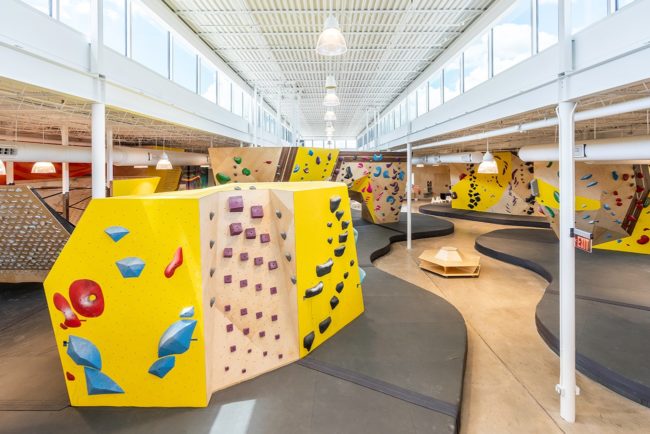
In the summer, Crux Collective was founded with the goal of “empowering local climbing gym owners to sustain and prosper in their communities.” As CBJ reported in July, this collective—a project by the same executive team that opened Crux Climbing gyms throughout Texas—offers “capital, operational support, and marketing and branding insights” to climbing gyms. At the collective’s launch, it was announced that $2.9 million would be invested into the planned Vital Climbing Gym in Brooklyn, New York, and Long Beach Rising in Long Beach, California, that opened in 2019.
Another interesting development at the turn of the calendar year came from Walltopia, which committed $10 million “to support new climbing business ideas” amidst the hardships of this pandemic period. The Walltopia Elevation Initiative includes equity participation and other forms of support for projects deemed to “improve the climbing industry.”
“We want to share our strength with the industry’s forward thinkers,” said Ivaylo Penchev, CEO of Walltopia. “…We won’t tell them what to do. They’ll manage their business. We will support them.”
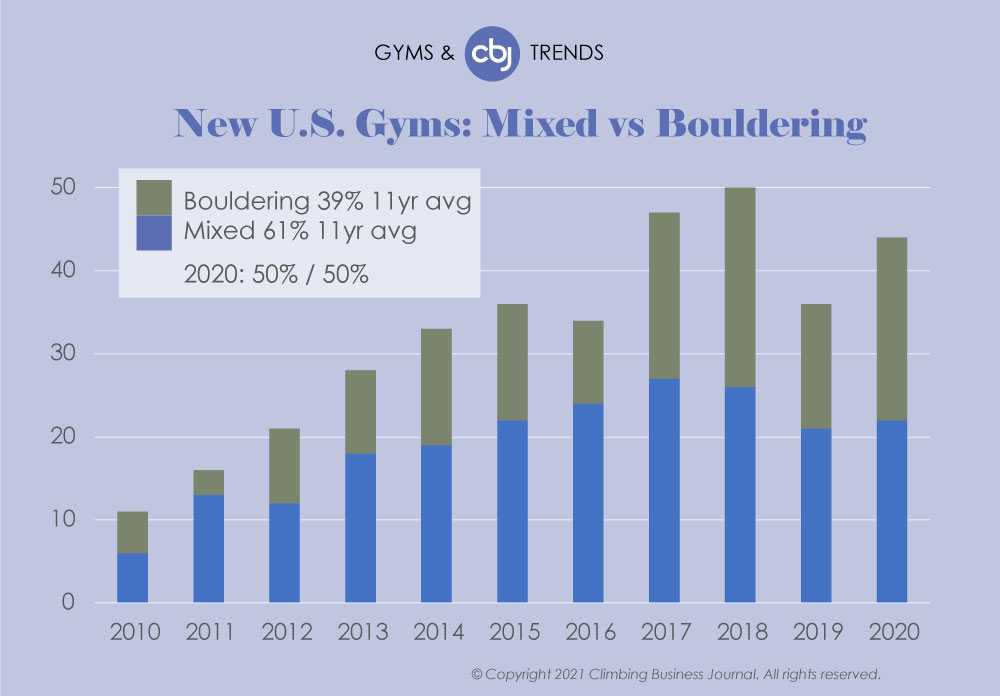
50: percentage of new U.S. climbing gyms in 2020 that were bouldering gyms
Not surprisingly, the trend of bouldering-focused gyms in North America that was observable at the start of the 2010s continued in 2020. Of the new climbing gym openings in the U.S. in 2020, 50 percent were facilities where bouldering was the prominent focus―the highest ratio ever. This seems like a logical trend, given the economic hardship of the year; larger, more expensive gyms are often mixed (meaning they offer both bouldering and rope climbing), which can pose more challenges for opening during difficult economic times.
“I’m not sure the pandemic had an effect here. But if anything, I’d think it may have turned some people from a full gym to a bouldering gym,” continued Casey Newman.
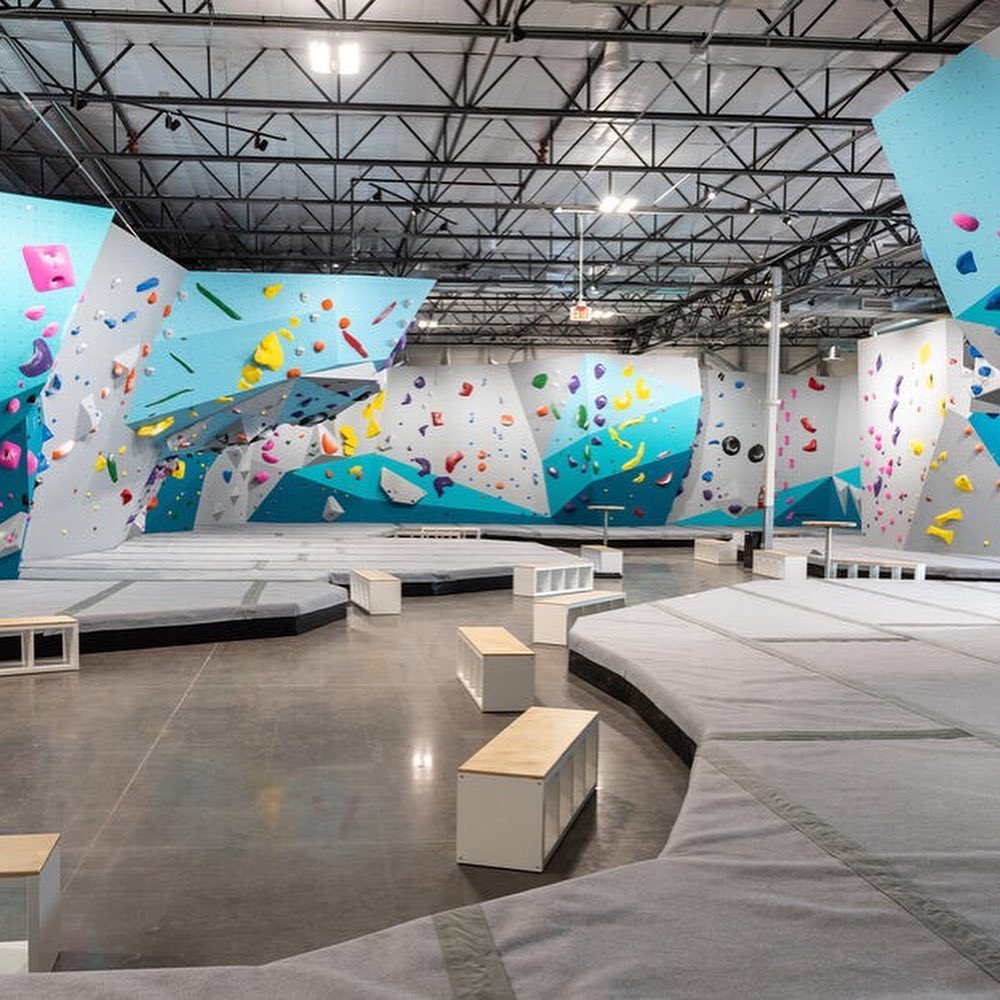
Still, the ratio of mixed gyms to bouldering-focused gyms planned for 2021 or later suggests that―even with the popularity of bouldering gyms over the past decade―mixed gyms are still in demand and will continue to be a fixture of the industry…even if the pandemic has delayed grand opening timelines. Of the 61 new climbing gyms that are planned to open in the U.S. in 2021 or later, 70 percent are mixed facilities (43). If all these facilities open, this would be the second highest percentage of new mixed gyms since 2011. (It is also worth noting that bouldering gyms can be developed quicker than mixed gyms because they generally require less capital; as a result, new bouldering gyms are often announced with less lead time. So, it is possible that more new bouldering gyms will appear in 2021 than are on the industry radar at the present time.)
“A large capacity facility that is much more than a climbing gym (all amenities included) reaches a broader demographic and allows for a larger number of members to be in the building at one time,” said Mike McCartan, Accounts Manager of Vertical Solutions. “This reduction in ‘crowding’ also played out extremely well during the pandemic and directly kept many gyms afloat during the harder times of certain state’s restrictions.
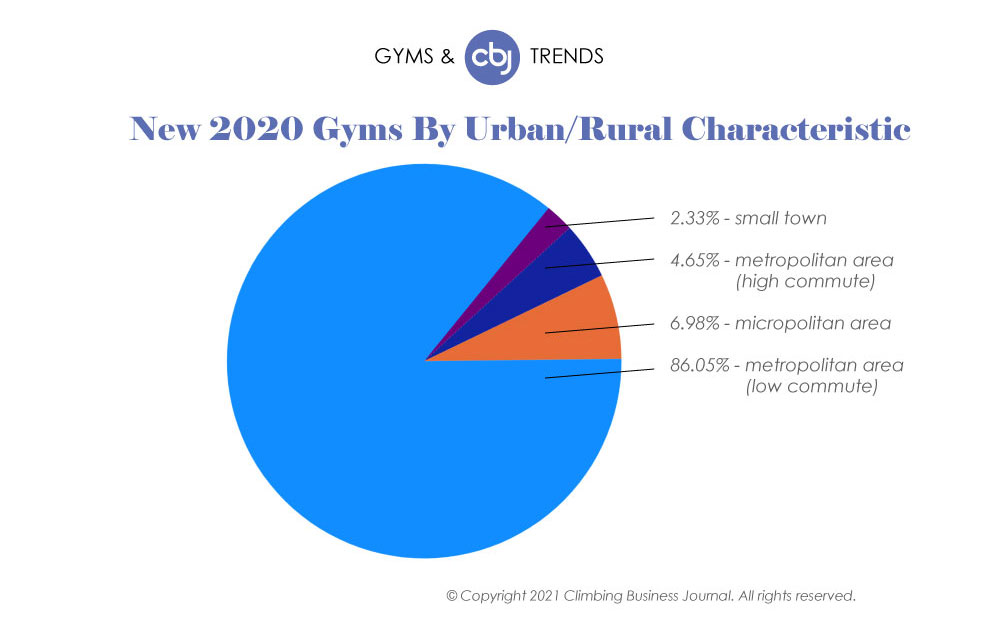
86: percentage of new 2020 gym openings in the U.S. in core metropolitan areas
Regionally, the states that opened the most gyms in 2020 were California, Florida, North Carolina, Pennsylvania and South Dakota, which each opened three new facilities. However, multiple gyms permanently closed in California, North Carolina and Pennsylvania as well as one in Florida, while zero permanently closed in South Dakota, meaning this 5th least populous state in the U.S. saw the most net gym growth in 2020.
Other states that saw multiple permanent closures in 2020 were Tennessee and Texas as well as one in Georgia, Hawaii, Louisiana, Ohio, South Carolina and Wisconsin, indicating that permanent closure trends were not limited to any single geographic region. On the flip side, nearly all of these states saw at least one new gym opening in 2020 or have one planned to open in 2021 or later, so gym development there is still happening.
“Despite COVID-19, gyms projects were started and had to be completed. The gyms had committed, and once you commit you either stick it and hold on or just bail,” said Ernest Coletta, owner of Strati Climbing.
Apart from a handful of gyms, the vast majority of new gyms that opened in 2020 were located in densely populated metro areas. This trend of new gym developers opting to open mainly in metro areas is not a new revelation, nor is it surprising or unique to 2020. Indeed, when cross-referencing CBJ gym data with recent data from the USDA Economic Research Service, 86% of all gyms in the U.S. are located within zip codes considered to be core metropolitan areas.
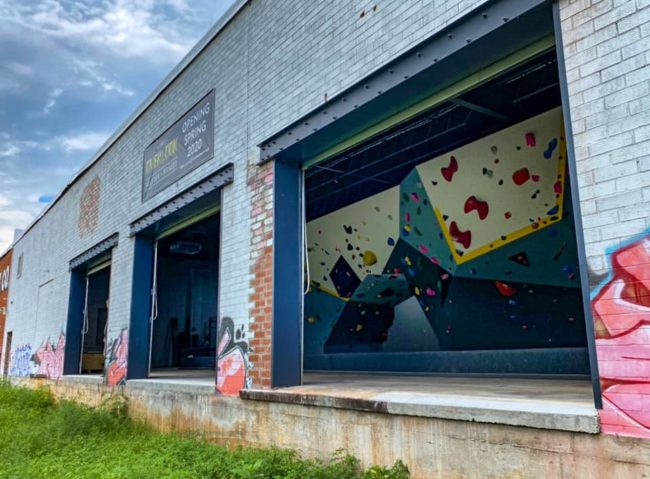
But the noteworthy aspect is the inverse of this metro profusion: just one gym opening in 2020 took place in a zip code that would be considered a “small town” (Sunrise Bouldering in Geneseo, New York), whereas previous years that saw the most gym openings to date (2017 and 2018) had multiple gym openings in “small town” zip codes. Perhaps, when confidence is high, gym developers are more keen to move into smaller—and potentially more rural—corners of the market. With so many new gyms planned for 2021 or later, this trend may very well continue.
“We expect to see continued expansion into regional areas well outside major metropolitan reach, while still seeing growth in metro areas that are realizing that the distance and proximity to other gyms does not have to be far due to recent population and popularity growth,” said Mike McCartan.
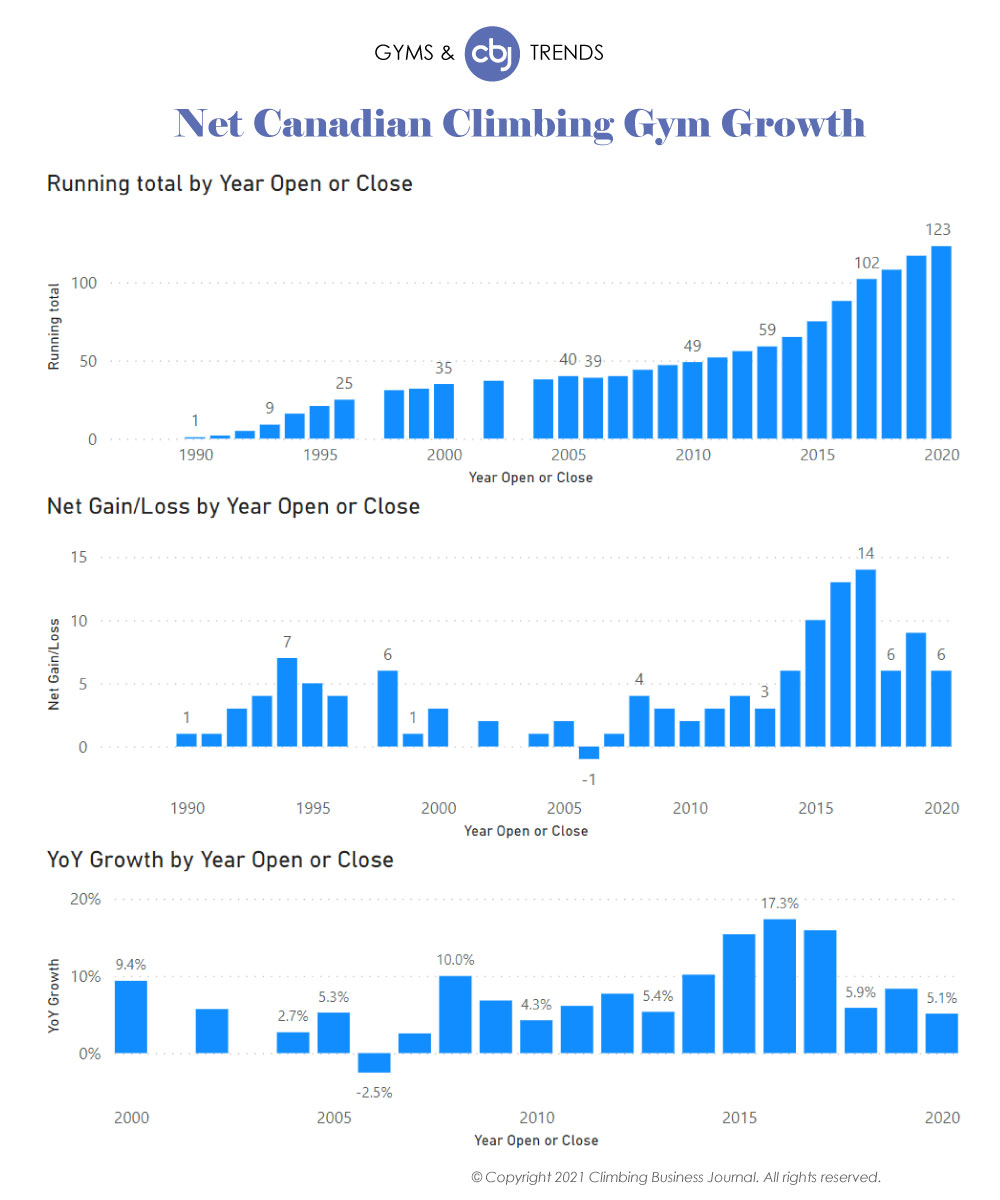
3: permanent climbing gym closures in Canada in 2020
In terms of the adjusted growth rate, Canada fared surprisingly identical to the U.S. in 2020. There were nine new climbing gyms that opened in Canada in 2020―only two less than in 2019 and one more than in 2018. The new gyms were almost evenly split between bouldering-focused facilities and mixed facilities (five bouldering and four mixed). Remarkably, only three Canadian gyms permanently closed their doors in 2020, just one more gym than in the two prior years. Together, the adjusted growth rate of commercial climbing gyms in Canada was 5.1 percent in 2020―the exact same as in the United States.
The new Canadian gyms spanned the country, with two located in Ontario (Aspire, Basecamp), two in Nova Scotia (East Peak, Seven Bays), three in Quebec (Le Crux, Cafe Bloc, Hook South Shore Bouldering), and two Hive facilities across Manitoba and British Columbia. In fact, Quebec tied for the most net gym growth in 2020 of any province or state (3), with zero gym closures last year. Quebec is home to wall builders and designers OnSite and Delire Climbing Walls, which mentioned to CBJ the Canadian government’s handling of the pandemic.
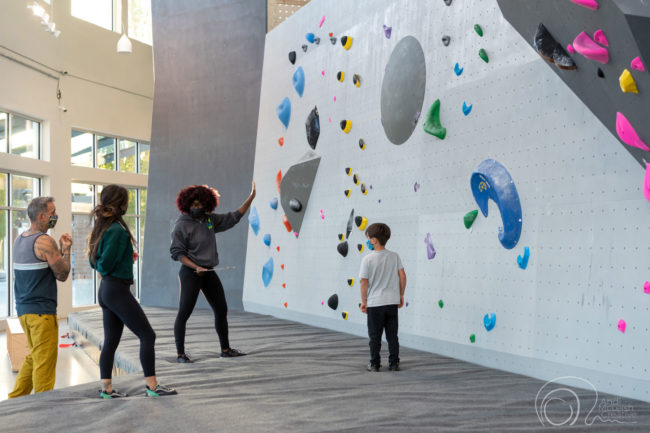
“We have the impression that the situation in the United States was more like a roller coster, compared to Canada,” said Patricia Morin, Marketing Coordinator of Delire. “The Canadian government has put a lot of money into institutions and businesses to support them during the crisis.”
Big Rock Bouldering in Alberta as well as Adventure Climbing Gym and Ground Zero Climbing in Nova Scotia were the sole gyms in Canada to cease operations according to our research. In the case of Ground Zero, permanent closure came on the heels of temporary closure in March 2020 due to the pandemic. “The landlord for the gym has chosen not to participate in the provincial rent-deferral program,” stated a message on Ground Zero’s Facebook page in April. Another message announcing permanent closure “due to financial challenges” followed three months later. The pandemic’s impact on leasing relationships would prove to be a trend in U.S. gym closings as well.
There are currently no gyms definitively planned to open in Canada in 2021 on our radar. But time will tell whether plans for other gyms will appear as the year progresses. Previous years’ statistics would indicate that multiple Canadian gyms will likely appear in 2021, as Canada has seen a net gain of at least two gyms every year since 2010.
20,000: meals distributed by Memphis Rox in 2020
Climbing has long necessitated and fostered a certain sense of community; from stewardship and safety precautions that must be collectively taken outdoors to self-judged competitions and group classes unique to the indoors, there has often been a pervasive sense that “we’re all in this together.” Such communal inclinations evolved in a myriad of directions in 2020.
First, in addition to the widespread mitigation efforts mentioned above, a number of climbing gyms offered additional support to their gym and neighboring communities. Memphis Rox, as a prime example, transformed its climbing space into an assembly line for care packages, lunches and hand sanitizer. According to an Instagram post in January, the pay-as-you-can nonprofit gym distributed last year 20,000 meals at no cost to those in need, 3,200 boxes of fresh produce, 700 masks, 300 hygiene kits as well as hand sanitizer to neighbors and Native American tribes.
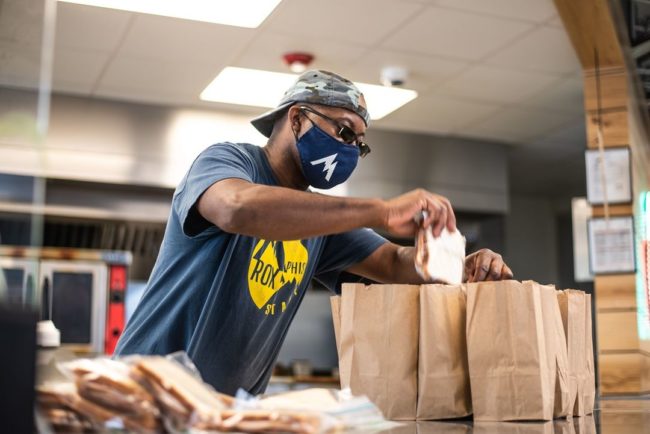
“Climbing is about community, and you have to get your community engaged during times of struggle,” Jon Hawk, Director of Operations at Memphis Rox, told CBJ over the summer. “The reason we are able to give out so many hygiene packs is because our climbing community stepped up and chipped in.”
Climbing gyms have had to pivot their business models to support their gym communities as well, especially gym staff. Many gyms like Bridges Rock Gym provided outdoor and virtual programming during the closures. Since outdoor activities are less restricted than indoor activities in California, Bridges even established outdoor climbing on its property in December, following the latest wave of closures.
Also in California, Sender One launched a distance learning camp. As some schools reopened in the fall with remote classes, parents sought places for their children to study while they were at work. COOL Camp offered a solution within the state’s tiered reopening system, and safety measures like social distancing and partitions between desks kept the environment as safe as possible. The camp provided jobs for staff, and scholarships were available to families financially impacted by this period.
“…Sender One is not alone when developing these types of offerings and programs,” said Crystal Tan, Sender One’s Brand Marketing Manager. “I reached out [to CBJ] wanting to share about our program to provide the possibility of what our climbing gyms can offer back to our communities.”
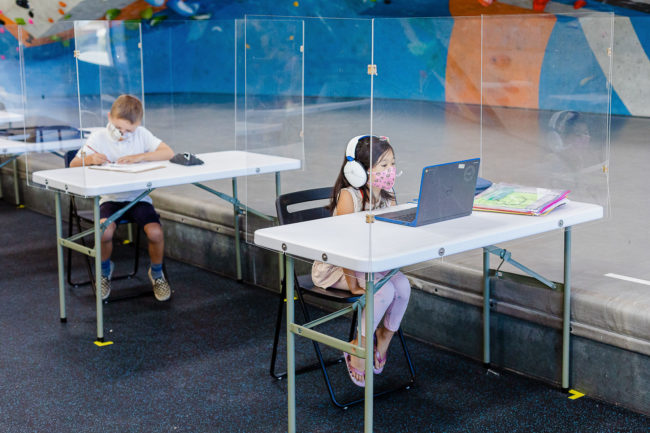
99: indoor climbing facilities in the CICC or WICC coalitions
As mentioned above, for many climbing gyms emergency support from the federal government was short lived, and climbing centers in states like California found themselves caught between a lack of continued financial aid and more restrictive reopening frameworks. While facilities were reopening at various capacities in other states, dozens of climbing centers in hard hit California counties remained closed throughout 2020. Confident their strict safety protocols, well-ventilated buildings and the relatively-anaerobic act of climbing makes for a much safer environment than acknowledged, 29 climbing center owners spanning 76 facilities banded together to lobby for having them moved into less restrictive bounds.
“Our shutdown affects tens of thousands of people in California, and we’re about to put more people back into the unemployment system,” said Kristin Horowitz in a Cal Matters article. Horowitz, co-founder of The Pad Climbing, started the California Indoor Climbing Coalition (CICC) alongside Alice Kao, CEO and co-founder of Sender One. The coalition won a victory in October when the state specifically positioned climbing centers alongside fitness centers, but the fight isn’t over. “We still have a long way to go―we’re looking at 25% capacity in [the most restrictive tier], not closure,” said Horowitz. More changes to the tiered reopening system on December 3 further complicated that objective. Regions were locked down where available ICU beds dropped below 15 percent of capacity. At 2020’s end, almost every county in California was on lock down and gyms were closed for indoor climbing.
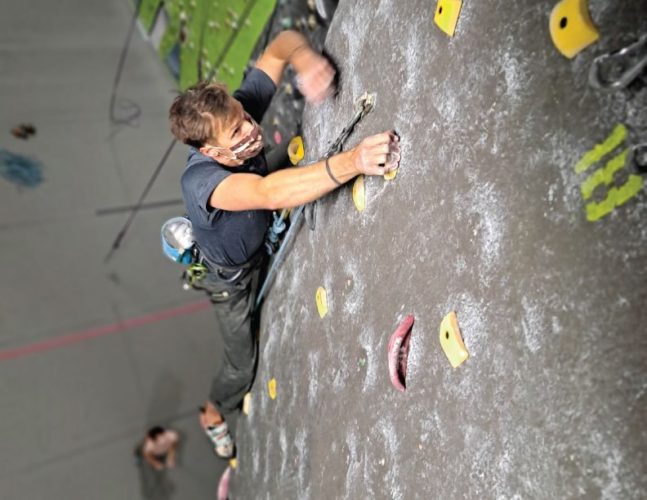
Further north, the Washington Indoor Climbing Coalition (WICC) formed to give climbing centers in that state a chance. 23 facilities across the state are listed as members on the coalition’s proposal letter. Like the CICC, the WICC platform is established on data-driven research, testimonials from medical professionals, and the shared belief that―with proper mitigation protocols―climbing centers are uniquely positioned to “open strong” and require their own set of guidelines for doing so. Newly available outbreak data in Colorado, New York, Michigan, Oregon, Washington and Washington D.C. supports this belief. According to data on the WICC website, in over 100 indoor climbing facilities across these states, zero outbreaks of COVID-19 have been recorded.
Climbing gyms in Washington will now have a chance to continue that legacy. At the start of January, the state of Washington released new guidelines as part of its Roadmap to Recovery which categorized climbing centers as “low risk sports.” While required to operate at no more than 1 customer per room or per 500 square feet, the victory still allowed gyms previously closed during the latest wave of COVID-19 to reopen.
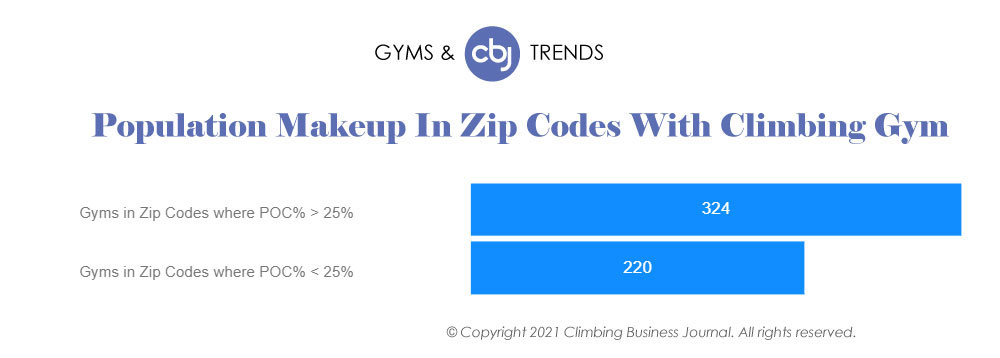
60: percentage of U.S. climbing gyms located in zip codes where people of color represent 25% of the population or more
In many ways, 2020 felt like a perfect storm of crises in America, from the COVID-19 pandemic to the fires out West, and national reckoning with police brutality and systemic racism. To be sure, the spotlight over the summer on the ongoing protests, the deep struggles they speak to, and the tough conversations that followed are not new. But the veritable wave of outpourings of support on social media by climbing gyms, brands, athletes and others in the climbing community had unique fervor to it.
Gyms cancelled climbing sessions and urged climbers to attend demonstrations instead; multiple brands pointed out broken systems; and countless gyms and athletes encouraged donations to organizers working in this space for decades like the NAACP as well as Black Lives Matter.
“It’s important to recognize―even though this is a particular moment―it’s one in a long, long series of moments where we’ve gone through similar situations in our country,” said Garnet Moore, CWA Interim Executive Director in a community call. “It’s something that hopefully can be carried forward and we can engender some change, at least in our small corner of the world.”

One way climbing gyms have been trying to change their small corners of the world is by improving equitable access to their services and the sport of climbing. Indeed, in cross-referencing CBJ gym data with data from the American Community Survey, the room for growth is clear. 60 percent of U.S. climbing gyms are located in zip codes where people of color represent at least 25 percent of the population. And on average, people of color represent 36 percent of the population in U.S. zip codes with a climbing gym. By contrast, just 18 percent of respondents to an American Alpine Club survey of climbers cited in its 2019 State of Climbing Report identified as persons of color.
Following the social unrest over the summer, numerous gyms and brands committed to further equity, diversity and inclusion initiatives within their own organizations. Stone Age in New Mexico, for instance―which hosted its annual Yank-N-Yard competition this year with extra safety precautions―established ongoing BIPOC and LGBTQ+ climbers nights to promote diversity and inclusion at its facilities. Further north, the Minnesota Climbing Coop began a book club to facilitate dialogues around these issues. And The North Face hosted a series of conversations on inclusion, equity and access for its virtual Global Climbing Day in August.
Only days earlier, American athlete Kai Lightner launched the nonprofit Climbing for Change. The organization’s mission includes “connecting underserved communities with individuals and organizations that seek to increase minority participation in rock climbing and the outdoor adventure industry.” Key to that mission is equity, and numerous grants and funding opportunities for BIPOC individuals and DEI initiatives within the industry are listed on the Climbing for Change website, including “facilitating gym/organization partnerships with industry businesses to offer affordable BIPOC membership programs.”
“After having consistent conversations with companies and aspiring allies about diversifying our industry, the consensus was clear; many wanted to create long term change, but few knew how. Thus, Climbing for Change was born, an organization dedicated to gathering funds and partnering with businesses to provide funding and opportunities for DEI initiatives across our industry,” Lightner said on Instagram.

1,060: signatures of the BKB Collective’s petition
Perhaps most emblematic of a large shift in company culture since last summer has been occurring at Brooklyn Boulders. According to an article on Gym Climber, Brooklyn Boulders received pushback from its Instagram posts around the summer protests. Most notably, a group of company employees organized into a collective and sent a letter to leadership demanding significant changes. Called the BKB Collective, the collective’s petition had received 1,060 signatures at the time of this writing, and several allies with petitions directed at other gyms like Triangle Rock Club and Hoosier Heights are listed on its website.
Since the letter, Brooklyn Boulders founders Jeremy Balboni and Lance Pinn have both stepped down from their positions as CEO and President, respectively. The company set-up a public DEI Work + Accountability Dashboard which includes the archived Instagram posts, its response to the collective’s demands, and a DEI Dashboard listing completed projects and those still in progress. One of those projects is increasing staff participation in decision making during the transition through the creation of three staff-elected steering committees. However, a round of staff layoffs perceived as retaliation for the collective’s organizing incited further pushback. According to an Outside article, the BKB Collective has since filed a complaint with the National Labor Relations Board and “employee relations remained rocky.”
“My priority is bringing back our staff in New York,” Martin Adler, Interim CEO of Brooklyn Boulders, told Gym Climber. “We’re reaching out to the staff that we laid off and letting them know that their jobs are available for rehiring. Unfortunately, in New York, our capacity is 33 percent of pre-COVID levels. So we’re not going to be able to rehire all of the people that we had working previously, when we were at 100 percent capacity.”
In addition to bringing back staff, the company is also working on a Climbing For All initiative, which includes the goal of “providing a million dollars-worth of access” funds in 2021. “We do understand that in our local communities where we operate, the fact that we run premium gyms at a premium price point, does price out some of the local folks that we want to be part of our community,” said Adler. “Over time, you’ll see more progress in more announcements about additional components of Climbing For All that go beyond the democratization of access.”
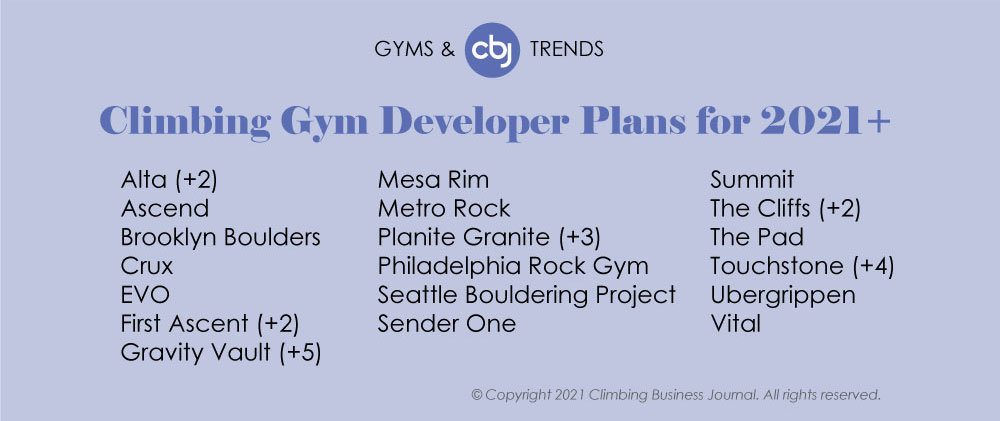
2021 Predictions
Even with the challenges of 2020 and the low U.S. growth rate of 5.1 percent—the industry’s lowest since 2010—there are multiple reasons why the outlook for the industry remains positive.
First, 5.1 percent is still a robust growth rate when compared to adjacent industries like the health club industry. According to a November report from the International Health, Racquet & Sportsclub Association, “data from major payment processing firms indicate that 15% of gyms, health clubs, and studios have closed permanently through Q3 2020.” In the U.S. climbing gym industry, only 3.5 percent of climbing gyms open before 2020 have since permanently closed their doors.
Second, the growth rate of the climbing gym industry in 2020 was a significantly robust one when compared to the economy as a whole. For the third quarter of 2020, the growth rate of GDP in the U.S. contracted by 2.8 percent, when compared to the same quarter the previous year. Arguably, any positive growth rate in 2020 should be considered a positive sign for an industry during this period.
Finally, the most encouraging indicator for the climbing gym industry—and the climbing industry, at large—may be the vast number of new climbing gyms that are planned to open in the U.S. in 2021 or later. On the one hand, 10 percent of gyms responding to the question in the CWA’s December survey indicated they are currently considering exiting their business, and 56 percent of respondents expect it will take one to two years for their revenue and membership to recover; on the other hand, 61 new gyms are planned to open in 2021 or later, indicating that gym developers and brands remain optimistic despite the current economic hardships, as previously mentioned.
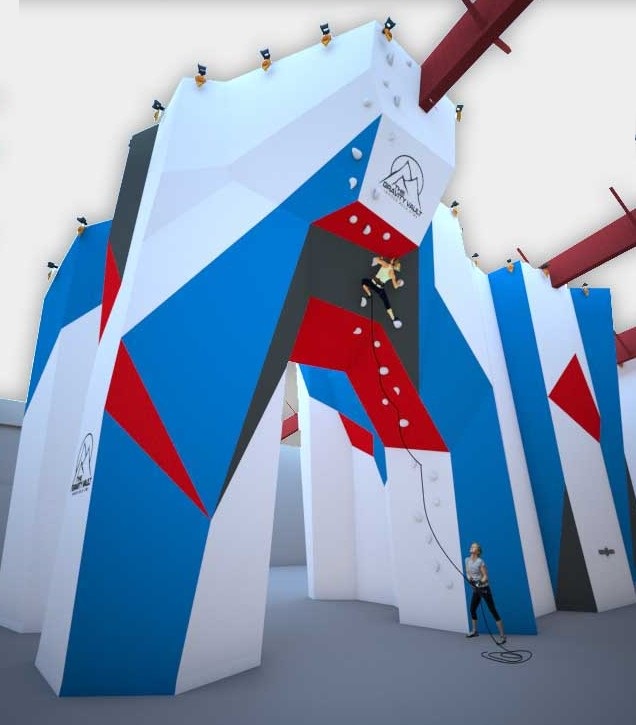
“We’re optimists that when the world sees the light at the end of the pandemic tunnel, people will be excited to get back to their favorite activity in the climbing gym and get back into climbing shape, but we can only hope this will happen soon,” said Ani Manova, Marketing Director of Walltopia. “We already miss a ton the regular training sessions and the social aspect of climbing, and we believe everyone in the community feels the same and is eager to be able to practice it again.”
Practically every major region in the U.S. has multiple new climbing gym openings planned for 2021 or later. Atop the list is California, where 12 new climbing centers are planned to open. Whether it will be possible to continue construction phases and open all of those California gyms within the state’s tiered reopening system in 2021 remains to be seen.
Several new gyms are planned to open in the Midwest and the Northeast too, with five gyms planned for both New York and Pennsylvania, two in New Jersey and nine across Illinois, Indiana and Michigan. Five gyms are also slated to open in Texas, four in Arizona, three in Colorado, and six across the Pacific Northwest (four in Washington and two in Oregon).
“With the lead time for these projects, I think you’re going to get a natural variance which makes it hard to put a projected growth rate on the industry, but I think it will continue to grow,” Mike Palmer, owner of Cascade Specialty, told CBJ.
But as in 2020, all business plans hinge on the pandemic crisis—and, as of very recently, vaccination efforts. Only time will tell what gyms and trends of 2021 will be talked about this time next year.

Behind the Data
CBJ is dedicated to researching and accurately reporting on climbing gym activity in the United States and Canada. We strive to always be data-driven, and more research was devoted to this year’s report than ever before. The industry growth rate and accompanying data were compiled through several different source avenues and is completely original and proprietary to CBJ. Any climbing gym is welcome—and encouraged—to update or add their information to CBJ’s comprehensive gym map and dataset here. For more information about the methodology behind the data, please visit the methodology section of Gyms & Trends 2019.
Thank you to everyone who has supported and furthered this research, including: the Climbing Wall Association, USA Climbing, Gym Climber and Vertical Life; the researchers who devoted many hours to collecting and fact-checking the gym data (Leif Coopman, Chris Ryan, Austin Lokey, Madeleine Eichorn); and special thanks to Theresa Phamduy for providing in-depth analysis and brand-new presentation of the data. And thanks to the team who has long supported CBJ’s research, in particular CBJ publisher Scott Rennak, CBJ founders Mike Helt and Marlowe Kulley, map data guru Jon Lachelt, as well as John Burgman, Joe Robinson and Jamie Strong.

Climbing Business Journal is an independent news outlet dedicated to covering the indoor climbing industry. Here you will find the latest coverage of climbing industry news, gym developments, industry best practices, risk management, climbing competitions, youth coaching and routesetting. Have an article idea? CBJ loves to hear from readers like you!




